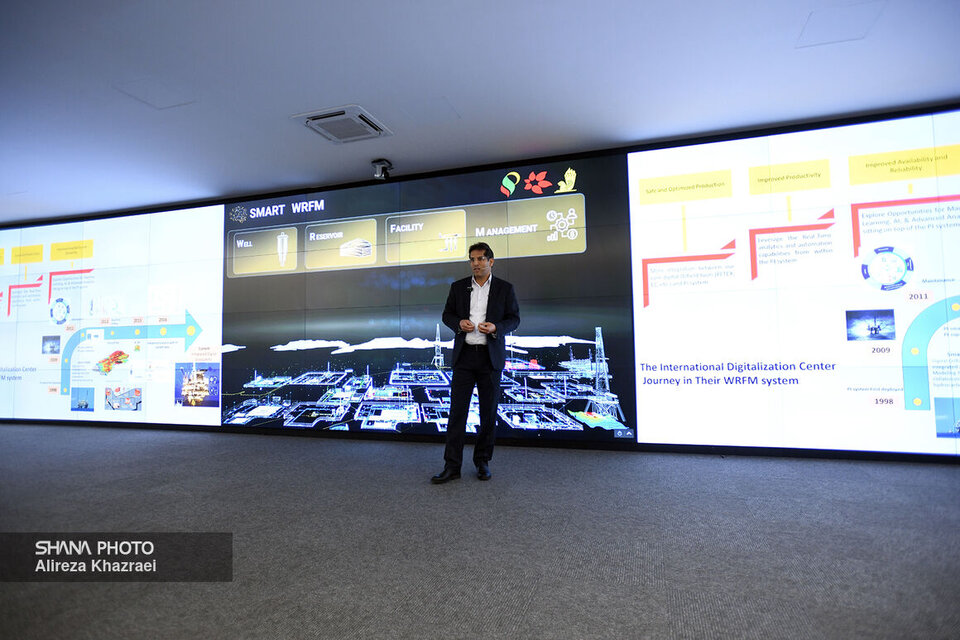AI has grown into a key tool to enhance production, reduce costs, and realize more adaptation to environmental developments in the petroleum industry. In Iran, some steps have been taken in recent years and the Ministry of Petroleum and National Iranian Oil Company (NIOC) have adopted extensive plans in this regard. Pasargad Energy Development Company (PEDC), an Iranian energy holding, recently managed to launch the first phase of Well, Reservoir and Facility Management (WRFM) in the upstream oil and gas sector by spending $10 million.
Significance for Iran
In 2020, Ernst & Young (EY) conducted an opinion poll about investment by oil and gas companies in AI, whose results were interesting. The survey showed that 92% of respondent oil and gas companies had either already invested in AI or had planned to do so by 2022. According to this survey, about 50% of oil and gas industry managers use AI to overcome challenges in all their organizational processes in a bid to optimize their processes and reduce their costs.
PEDC, which has already invested heavily in the oil and gas sector and renewable energies, has focused on AI in the past year. In light of restrictions caused by sanctions, PEDC engineers developed WRFM to maximize production and recovery in a safe, sustainable, and cost-effective manner. Although Iran sits atop the world’s largest oil and gas reserves, because oil and gas fields are in the second half of their life, application of any method to enhance recovery or prevent fall-off would be vital. Increased oil and gas production capacity, increased hard currency revenue, bolstered energy security, increased competitiveness in global markets, foreign investment attraction, improved diplomatic ties, resilience to challenges caused by sanctions and job creation are some advantages of the WRFM process.
Details of Local WRFM
Construction of the first WRFM in Iran started in February 2024. It was launched in January 2025 as the first center in the upstream oil and gas sector.
PEDC’s WRFM is a management and technological structure in the upstream oil and gas sector. It uses a variety of tools, supervision and transmission operations, data analysis, and intelligent data processing for online management of operations pertaining to wells, reservoirs, and facilities.
WRFM is fitted with modern technologies including advanced sensors, data management systems, AI, and online data analysis in a bid to provide comprehensive data on the status of wells, flow of reservoir, and performance of facilities.
Investment in 2nd Phase
The second phase of this project aimed at completing drilling operation and engineering systems, well stewardship, and maintenance would need $5 million in investment shortly. Forecasts indicate that this investment would be provided by the Office of Vice President for Science, Technology and Science-Based Economy, NIOC, and PEDC for a year, which would facilitate access to applied digital transformation in the world-class upstream management of oil field development and production.
1st Phase Achievements
Online data gathering, storage and analysis, accessibility of updated data, integrated display system, observing data patterns and trends, and issuing necessary warnings, helping with quick and timely decisions in development and production operations, reducing operational risks, ensuring achievement of performance indicators, and the ability to access the company’s assets at any geographical location, and continuously optimizing the value of assets are among the goals achieved in the first phase of PEDC’s WRFM.
Other achievements of the first phase include preventing an output fall of 8,000 b/d and achievement of 1.4 mb total output, which would be valued at $100 million.
Key Goals in 2nd Phase
In The second phase of the development of this center, the existing systems will be made smarter by using machine learning methods, deep learning, AI models, and large language models. Smart optimization of production and flow assurance with smart monitoring of downhole pump operation, asphaltene sediment monitoring, pipe corrosion monitoring, completion of online hardware infrastructure, and smart maintenance and repair of facilities, as well as smart downhole operations, safety, production of drilling operations, and guidance of horizontal well drilling are also among the key objectives of the second phase.
Business Intelligence and AI
Furthermore, this project is considered one of the most important business intelligence projects. Business intelligence is a prerequisite for AI. Accordingly, projections indicate that artificial intelligence will be added to this center within the next calendar year to provide the necessary solutions.
It is important to note that such projects are carried out in most of Iran’s neighboring countries using the power of international companies, but in Iran, they have been carried out by domestic manpower. The first smart refinery is also planned to be built in Qeshm by PEDC.
Hossein Afshin, vice president for science, technology, and science-based economy, said in neighboring countries, such projects are operated using international firms’ capability while in Iran, local technology has been used. PEDC has now removed the barrier, thereby facilitating the job for other companies in this way.
Omid Shakeri, deputy minister of petroleum for research and technology, also said the Ministry of Petroleum was moving to support oil companies in using AI. “If these companies need support and facilitation we would help them move towards maturity.”


Your Comment